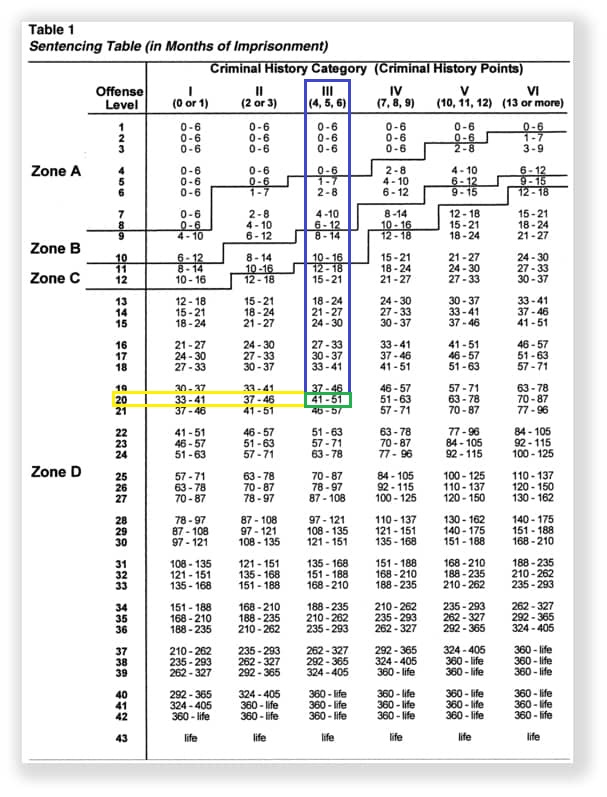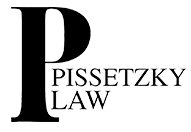Federal Sentencing Hearings
There is a big difference between state and federal court when as to how a judge determines your sentence. If you decide to enter into a plea in state court, generally speaking, your attorney and the prosecutor come to an agreed sentence. Though the judge always has the final say, the judge almost always goes along with the deal worked out between the state and your lawyer without formal motions or hearings.
If, on the other hand, you lost at trial, the state court judge will order a pre-sentence investigation report (P.S.R.) prior to sentencing. This type of PSR is very generic and does not have many details. During the sentencing hearing, although the judge, prosecution, and your lawyer will all have a copy of the PSR, it will not be the main focus. The prosecutor and your lawyer will present arguments to the judge as to the proposed sentence, and the judge will then make a determination based on the statutorily available sentence range. In federal court, the process is much more complex.
Unlike state court, whether you plea or lose at trial, the only person that will determine your sentence is the judge. Even if you decide to plead guilty, your lawyer and the prosecutor cannot reach an agreement that the judge simply goes along with. Instead, most plea agreements in federal court specifically explain that the prosecutor and your lawyer will only be able to make recommendations to the judge as to the desired sentence.
How is Sentencing Determined?
Sentencing is determined by the judge on the following factors:
- 1. The PSR and probation recommendation;
- 2. The government’s sentencing memorandum and arguments at sentencing;
- 3. Your lawyer’s sentencing memorandum and arguments at sentencing;
- 4. Victim statements;
- 5. Character letters; and
- 6. Your statement to the judge.
The PSR is written by a probation officer who will interview you and submit the very detailed Pre-Sentence Investigation Report (P.S.R.) and Sentencing Recommendation to the judge, your lawyer, and the prosecutor. The PSR will include your family history, your education and work history, your financial history, your criminal history, a detailed account of the offense, and detailed Sentencing Guidelines calculations. The Guideline Sentencing Range under the United States Sentencing Guidelines and Factors is laid out by 18 U.S.C. § 3553. The guidelines range will set a presumptive sentencing range for the judge to begin his/her analysis to determine a just and fair sentence. After considering all the factors listed above, the judge will determine whether to sentence you within, above, or below the guidelines range. Your lawyer’s job, obviously, is to convince the judge to sentence you well below the guidelines range.
Guideline Range
In 1984, the United States Congress established the United States Sentencing Commission which developed and authored the United States Sentencing Guidelines Manual. The Manual serves as a blueprint that sets out a precise calibration of sentences based on a Total Offense level and the defendant’s Criminal History.
Total Offense Level
Each federal offense corresponds with a specific guideline level found in the Manual. Each offense has a Base Offense Level, which serves as the starting point for determining the seriousness of that particular offense. The more serious the crime, the higher the Base Offense Level. For example, Trespass has a base offense level of 4, while Kidnapping has a base offense level of 32.
Each offense guideline also provides specific offense characteristics that may increase or decrease the Base Offense Level. The factors vary from offense to offense. For instance, Robbery begins with a Base Offense Level of 20, and provides specific offense characteristic enhancements pertaining to the use of a firearm. If a firearm was brandished during the robbery, the Base Offense Level is increased by 5-levels bringing the Total Adjusted Offense Level to 25; and if the firearm was discharged during the robbery the Base Offense Level is increased by 7-levels bringing the Total Adjusted Offense level to 27.
In addition to specific offense characteristic adjustments, there are categorical adjustments that can be applied to every offense. These categorical adjustments are broken down into the following categories: victim-related adjustments, the offender’s role in the offense, obstruction of justice, acceptance of responsibility, etc.
Categorical adjustments are applied to the Offense Level the same way as the specific offense characteristic adjustments. For instance, if the defendant obstructed justice, the offense level is increased by 2-levels. Likewise, every defendant who pleads guilty is eligible for a 2-level reduction and those whose offense levels are greater than 16 may be granted an additional 1-level reduction.
The Total Adjusted Offense Level is determined by adding and subtracting any applicable specific offense characteristics and categorical adjustments to the base offense level. The end result is the Total Adjusted Offense Level under the Federal Sentencing Guidelines Table shown below.
Criminal History
Once an Adjusted Total Offense Level is reached, the Criminal History Category must be determined. A specific number of Criminal History Points are added together for every prior criminal conviction and sentence that occurred within fifteen years of the commission of the instant offense.
The amount of points assigned depends on the length of the prior sentence. For example, 3 points are added for each sentence of imprisonment for more than 12 months; 2 points for each prior sentence of imprisonment of at least 60 days; 1 point is added for any sentence less than 60 days of imprisonment, including probation, etc.
All the Criminal History Points are added together to determine the Criminal History Category. The more Criminal History Points, the higher your Criminal History Category will be as can be seen in the Federal Sentencing Guidelines Table below.
Federal Sentencing Table
The Guideline Sentencing Range is determined by the point at which the Total Adjusted Offense Level and the Criminal History category intersect on the Sentencing Table.
For example, if the Total Adjusted Offense Level was 20 and the defendant was Criminal History Category III, the Guideline Sentence Range would be 41 to 55 months.
The following is the federal sentencing table:

§ 3553 Factors
Importantly, the United States Supreme Court ruled that a Guideline Range sentence is not mandatory, but only serves as a starting point for the judge to determine your sentence. In other words, the sentencing judge is not required to issue a sentence that falls within the guideline range. Instead, the final sentence must also reflect a variety of factors laid out by 18 U.S.C. § 3553.
These § 3553 factors include:
- the nature and circumstances of the offense and the history and characteristics of the defendant;
- the seriousness of the offense,
- the need to promote respect for the law, and to provide just punishment for the offense;
- the need to afford adequate deterrence to criminal conduct;
- the need to protect the public from further crimes of the defendant; and
- the need to provide the defendant with needed educational or vocational training, medical care, or other correctional treatment in the most effective manner;
- the kinds of sentences available;
- any pertinent policy statement issued by Congress
- the need to avoid unwarranted sentence disparities among defendants with similar records who have been found guilty of similar conduct; and
- the need to provide restitution to any victims of the offense.
These factors are just as important as the Total Adjusted Offense Level. Their application forces judges to see a fuller picture. Many defendants who are convicted of federal crimes suffer from drug addictions, or grew up without any support from their parents. Considering such circumstances prevents robotic, heartless sentences. That is why your lawyer must file a comprehensive and compelling sentencing memorandum that will convince your judge to sentence you below the guidelines range.
Determining the Final Sentence
Only after weighing the Guideline Range and the § 3553 Factors can the sentencing judge issue the final sentence. A length of time that can fall anywhere within the statutory minimum and maximum.
Though determining the Total Offense Level, Criminal History, and arguing § 3553 factors may appear to be simple, the process is incredibly complex. Importantly, the application of offense level adjustments and criminal history points is not straightforward. Federal prosecutors routinely argue for every imaginable enhancement and the highest Criminal History Category to apply. The Guideline Manual, however, provides very specific definitions as to when each adjustment should apply and what prior convictions count towards a criminal history score. Knowing exactly what circumstances need to be present and what arguments to make to convince the judge not to apply certain adjustments and convictions requires an experienced criminal defense attorney.
The same is true for § 3553 factors. Sentencing is always an uphill battle. Whether you plead guilty or are found guilty after trial, you stand before the sentencing judge convicted of a federal crime. Convincing the court to earnestly consider your personal characteristics that show that you are more than the single worst mistake you’ve made requires compassion, drive, and years of experience. The dedicated lawyers at Pissetzky Law LLC have successfully convinced countless federal judges across the country to issue significant below Guideline Sentences. If you or a loved one is facing serious federal criminal charges, do not hesitate to contact us today.


